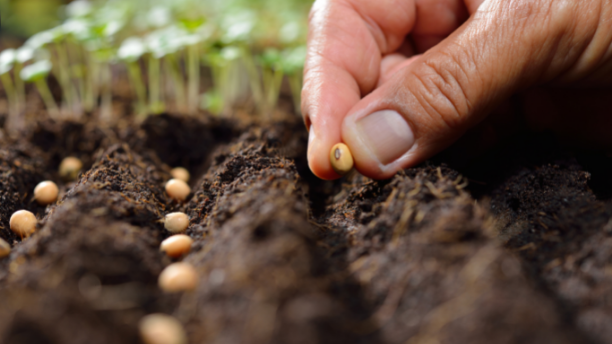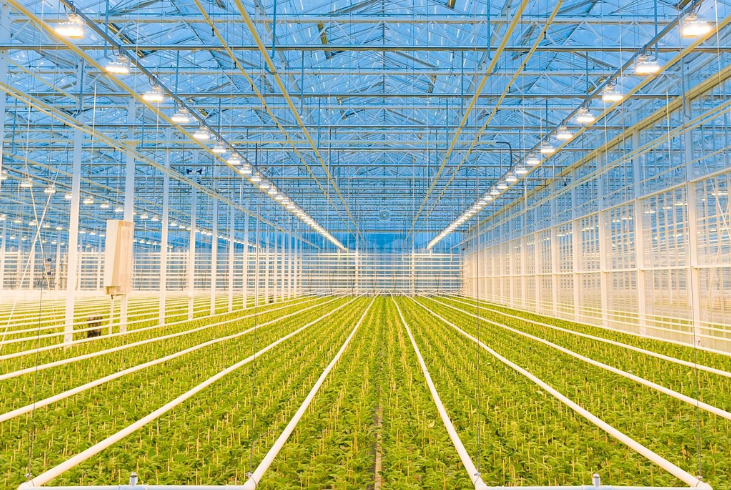Blockchain in horticulture: beyond the hype!
.png?width=72&name=Cor%20Verdouw%2c%20Innovation%20manager%20Mprise%20(1).png)

Recently I visited an inspiring seminar on the opportunities of Blockchain in horticulture. Blockchain has been caught, for several years now, in the spotlight of attention. It seems to be the solution for all data exchange problems.
The title of the seminar was therefore quite well suited: “Blockchain: Haarlem oil?!”. Haarlem oil used to be a famous Dutch medicine that was marketed as a cure for many ailments. The term nowadays is used to imply a fix for all problems. Is Blockchain such a panacea, indeed ? The answer at the end of the day was negative. No, Blockchain is not the magic wand, although it is a promising technology that can raise the supply chain digitalization to a higher level. For horticulture as well. How?
What makes Blockchain so unique?
Blockchain is a new manner to share data and to conduct transactions. The transactions could be of any type: financial such as for Bitcoin as well as for, say, transport orders, FairTrade certifications, phytosanitary inspections, quality control or even transfer of returnable trade items to a carrier.
Technically speaking, Blockchain is unique due to the combination of several properties; in particular:
- Transactions are always linked to their previous ones and are thus traceable to the source.
- Participants in a Blockchain network do one-to-one business based on consensus and not through a central intermediary (such as a bank or controller).
- All participants retain a copy of the data and are thus not dependent on a central database.
- The stored data is encrypted and can no longer be modified after approval.
Blockchain makes it possible to share data safely. Consequently, one may assume that there is no unauthorized use of your data. It also assures both customers and governments with the confidence that there is no meddling. Thus, it eliminates one of the most critical bottlenecks on chain transparency, i.e. a lack of trust. And by sharing more data in the chain, huge gains can be attained in efficiency, quality, food safety, sustainability, and consumer confidence.
With Blockchain, the US retailer Walmart reduced, for example, the time to trace the origin of mangoes from almost seven days to 2.2 seconds. Blockchain also reduces red tape and shortens the chain since central approval for transactions becomes redundant. A nice example is the we.trade platform for international payments.
It is quite logical that the expectations are high ...
Opportunities for Blockchain in horticulture
Blockchain, however, has disadvantages as well. Validation based on consensus requires a lot of computing power. Particularly with large Blockchains, checks are time-consuming. The technical scalability is limited and interoperability, based on standards, is still a challenge. The organizational aspect is often demanding too. It is therefore vital to focus Blockchain on applications where the benefits mentioned above are optimally exploited.
For example, situations where trust in data is paramount, the risk of fraud is high or cases of cumbersome, expensive approval procedures. In horticulture, you might consider sustainability certificates, (international) payment guarantees, management of carriers and containers, quality control, export permits or plant passports.
Think big, start small
Great, you may be thinking, but I would rather wait till Blockchain has proven itself. It is true that the technology is still evolving. However, according to the Gartner hype cycle, the so-called ‘peak of inflated expectations' has been passed. Now, all kinds of increasingly professional applications are emerging. If that gains momentum, it shall have a significant impact on chain collaboration in horticulture.
That offers opportunities! However, you must be ready for it. This is only possible by acquiring knowledge and experience with Blockchain now, for instance, through practical and bite-size pilots.
Plant protection example
Hence, a group of Dutch forerunners, including Mprise Agriware, has recently taken the initiative for a Blockchain pilot in floriculture. This pilot will focus on sharing plant protection information within the chain. Consequently, it becomes instantly apparent, per lot or batch, what was sprayed and when, whether the substances used were appropriate and permitted, and which certificate applied. The requisite is, of course, that growers accurately register the relevant data in their business management systems.
The pilot must, above all, inspire more confidence in the market by the correct use of plant protection products in the chain. Consequently, it should be able to establish compliance with the legal requirements easily, as well as to the requirements of retailers and the growing number of sustainability certificates. Be good and tell it! Recent incidents, such as the Greenpeace’s Valentine bouquets, containing several prohibited pesticides, indicate that this trust must be earned. For example by using Blockchain!







